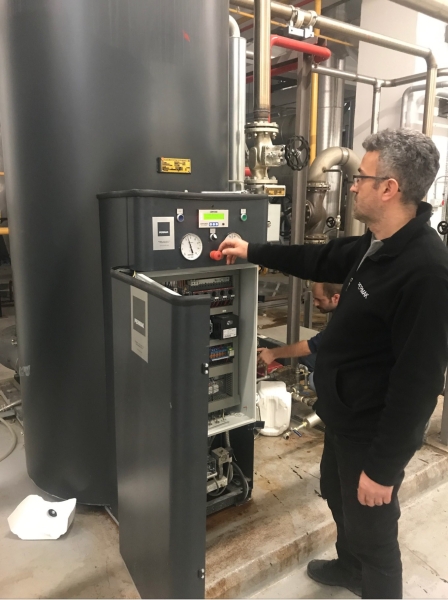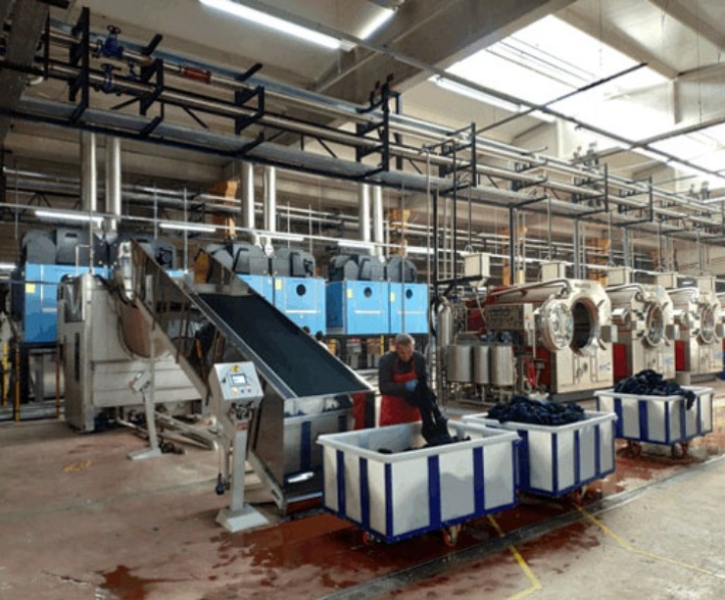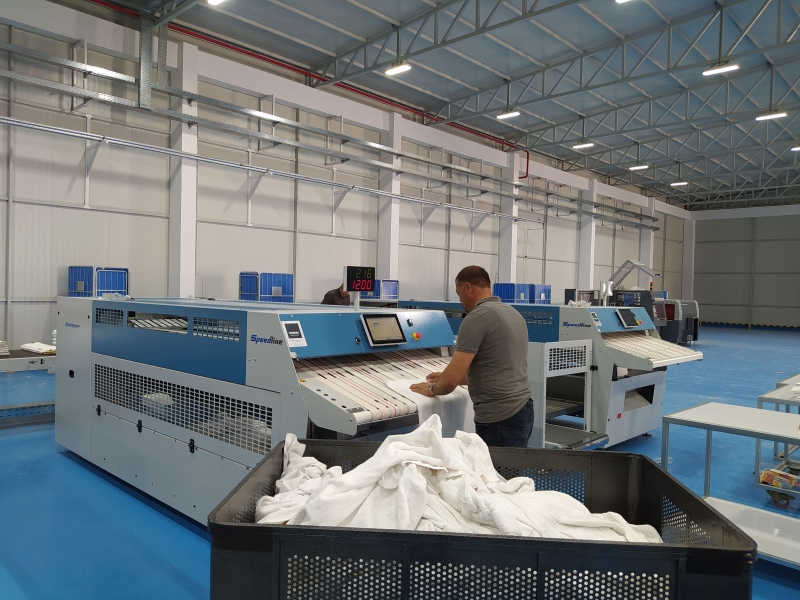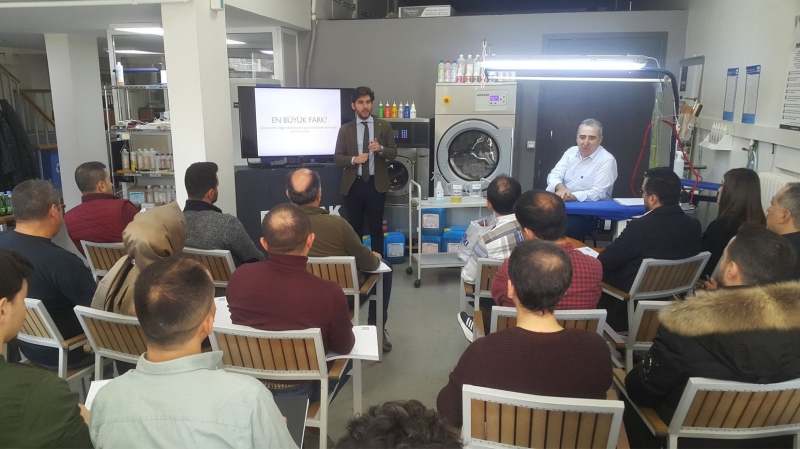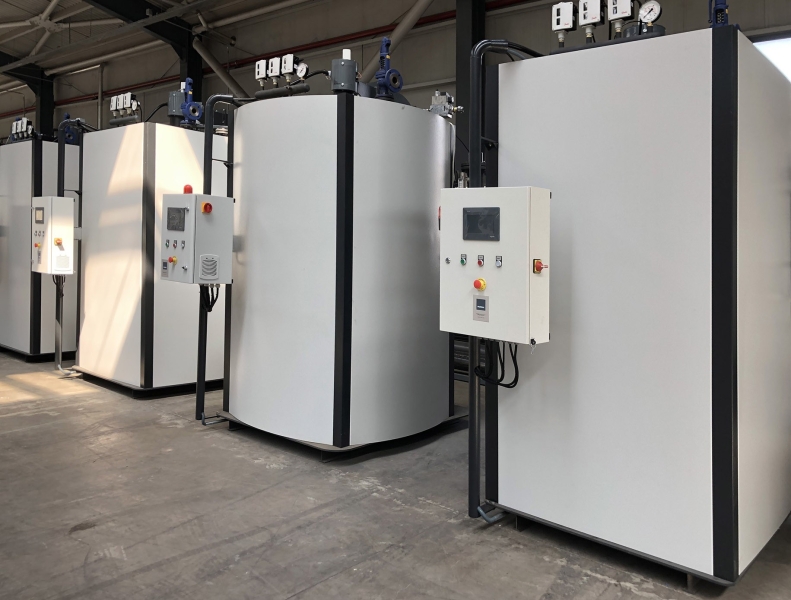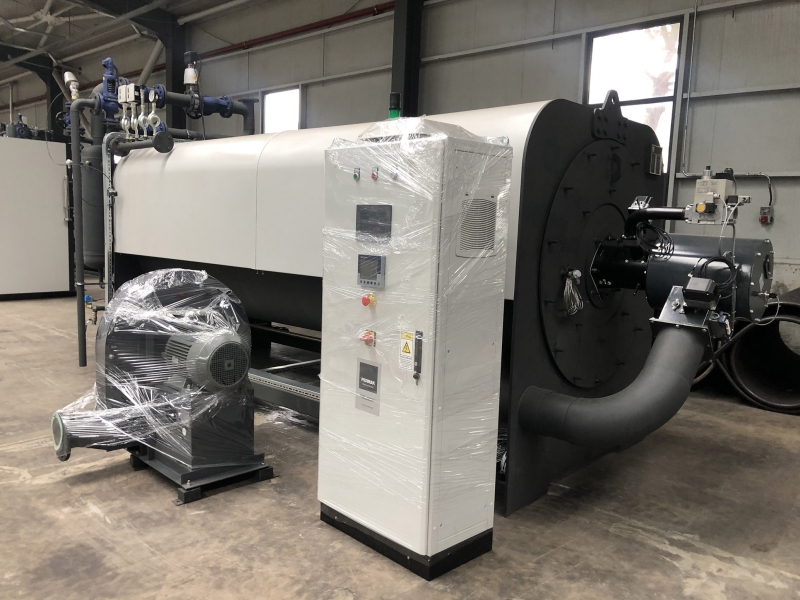Tips for Steam Systems
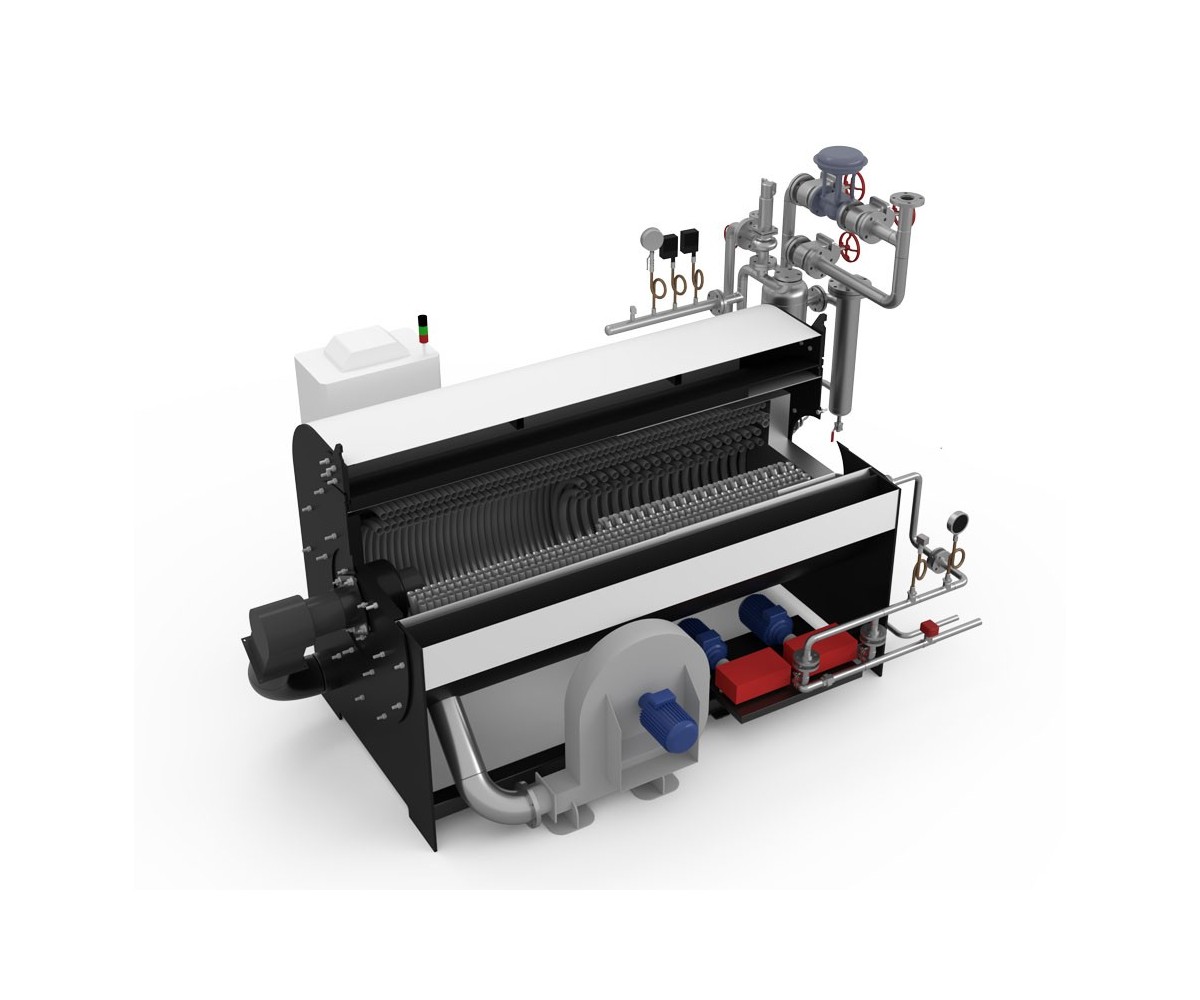
1. Separator
 It is recommended to use a separator (moisture separator) before devices, at the boiler outlet, and at the main line inlets. The separator captures water droplets carried along with the steam. This ensures that drier steam is sent into the system. Using dry steam improves efficiency, increases product quality in processes where steam is directly sprayed, and extends the lifespan of fittings by preventing the corrosive and abrasive effects of water.
It is recommended to use a separator (moisture separator) before devices, at the boiler outlet, and at the main line inlets. The separator captures water droplets carried along with the steam. This ensures that drier steam is sent into the system. Using dry steam improves efficiency, increases product quality in processes where steam is directly sprayed, and extends the lifespan of fittings by preventing the corrosive and abrasive effects of water.
To definitively solve the problem of water carryover in steam boilers, it is recommended to use separators at the boiler outlets.
2. Steam Collector
The collector is the unit where steam is distributed. The steam trap used in collectors should discharge condensate as soon as it forms and withstand harsh conditions. The most suitable type of steam trap for collectors is thermodynamic.
The collector diameter is determined by the formula:
D_collector = √ ((D_valve1)² + (D_valve2)² + (D_valve3)² + (D_valve4)²).
Condensate discharge should be provided by creating a condensate pocket in the collector where condensate can be easily drained, as shown in the figure.
In collectors, the inlets should be on one side and the outlets on the other side.
The condensate pocket should not be below the inlets or outlets.
3. Main Steam Line – Condensate Pockets
 The ideal spacing for condensate pockets in steam transport lines is 30–50 meters. Condensate pockets should be constructed at appropriate intervals to discharge the condensate formed in the main line. Additionally, condensate accumulating at elbows during line elevations should also be drained.
The ideal spacing for condensate pockets in steam transport lines is 30–50 meters. Condensate pockets should be constructed at appropriate intervals to discharge the condensate formed in the main line. Additionally, condensate accumulating at elbows during line elevations should also be drained.
For steam transport lines, the condensate pocket diameter is the same as the nominal diameter up to DN100 mm pipes; for larger diameters, it is chosen two sizes smaller.
In steam transport lines, the thermodynamic type is the most resistant steam trap to atmospheric conditions and water hammer.
4. Air Problem and Air Vent Application at Line Ends
 Air vents should be used at the ends of lines in the system. This is necessary for the system to heat up quickly and for steam to reach the units more efficiently. Otherwise, trapped air at the line ends will hinder steam discharge.
Air vents should be used at the ends of lines in the system. This is necessary for the system to heat up quickly and for steam to reach the units more efficiently. Otherwise, trapped air at the line ends will hinder steam discharge.
5. Unit Line Design
For the best efficiency in steam installations, dry steam is essential. In steam distributions made from the main steam line to the units, branch connections should always be made from the top. If made from the bottom, water will travel along with the steam.

STEAM TRAPS
Steam traps are one of the most important fittings in steam installations. Mistakes made in selecting steam traps and designing the line can reduce system efficiency and cause fittings to fail in a short time. Additionally, steam leaks caused by steam traps can impose a significant financial burden on operations. Therefore, selecting the most suitable steam trap for the process is one of the biggest steps towards energy savings. Accordingly, the line design should also be made so as not to hinder the operation of the steam traps.
It is recommended to use a strainer before the steam trap and a check valve after it. Remember that these fittings will extend the lifespan of the steam traps and ensure the system operates healthily.
Below is a sample steam trap connection diagram. The sequence in which the fittings and steam trap should be installed in the line is shown in the diagram. It would be beneficial to design the system accordingly.

1. Ball Valve 2. Strainer 3. Steam Trap 4. Check Valve 1. Ball Valve
The strainer in this system serves to catch debris formed by steam condensation in condensate lines, while the check valve prevents back pressure in steam traps discharging into the same line, increasing the discharge capacity. It will also prevent backflow due to vacuum, which can damage the steam traps.
We recommend paying attention to the diagram when installing steam traps.
We can explain steam traps by reviewing their working principles as follows:
Thermostatic Steam Trap
 These traps are also known as capsule steam traps. Thermostatic steam traps can discharge condensate at 10 to 30°C below the steam temperature. For example, in a 6-bar process where the steam temperature is 165°C, these traps discharge condensate below 135°C. Condensate above this temperature remains in the line and coils, forming a layer that impedes heating. Even a 1 mm water film offers resistance to heat transfer equivalent to that of approximately 0.5 meters of copper. For this reason, especially in coiled systems, it is essential to remove water from the system as soon as it forms.
These traps are also known as capsule steam traps. Thermostatic steam traps can discharge condensate at 10 to 30°C below the steam temperature. For example, in a 6-bar process where the steam temperature is 165°C, these traps discharge condensate below 135°C. Condensate above this temperature remains in the line and coils, forming a layer that impedes heating. Even a 1 mm water film offers resistance to heat transfer equivalent to that of approximately 0.5 meters of copper. For this reason, especially in coiled systems, it is essential to remove water from the system as soon as it forms.
In addition, this water layer not only prevents heat transfer but also causes water hammer, leading to cracks in connection unions and even punctures in coils.
Inverted Bucket Steam Trap
 Although this type of steam trap discharges condensate as soon as it forms, it is insufficient in venting air. Since air is a much stronger insulator than water, the air that cannot be vented will greatly delay heating. A 1 mm air film has the same heat resistance as 13 meters of copper. Furthermore, since steam cannot enter areas filled with air, the steam volume decreases, affecting efficiency.
Although this type of steam trap discharges condensate as soon as it forms, it is insufficient in venting air. Since air is a much stronger insulator than water, the air that cannot be vented will greatly delay heating. A 1 mm air film has the same heat resistance as 13 meters of copper. Furthermore, since steam cannot enter areas filled with air, the steam volume decreases, affecting efficiency.
Float Steam Trap
 The float steam trap, equipped with an air vent, expels air from the system. Using the float, it discharges condensate as soon as it forms, speeding up system heating. The discharge temperature is the same as the steam temperature. Due to these features, float steam traps are the most suitable type for coiled/plate heaters, air handling units, dyeing machines, and roller sanforizing machines.
The float steam trap, equipped with an air vent, expels air from the system. Using the float, it discharges condensate as soon as it forms, speeding up system heating. The discharge temperature is the same as the steam temperature. Due to these features, float steam traps are the most suitable type for coiled/plate heaters, air handling units, dyeing machines, and roller sanforizing machines.
Thermodynamic Steam Trap
 Due to its robust construction, this type is preferred in main steam lines, line ends, and collectors. Additionally, since it discharges condensate as soon as it forms, it has high thermal efficiency. For these reasons, thermodynamic steam traps should be used at the end of lines and in collectors to ensure proper discharge.
Due to its robust construction, this type is preferred in main steam lines, line ends, and collectors. Additionally, since it discharges condensate as soon as it forms, it has high thermal efficiency. For these reasons, thermodynamic steam traps should be used at the end of lines and in collectors to ensure proper discharge.
.


